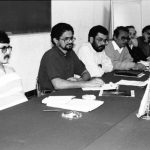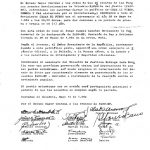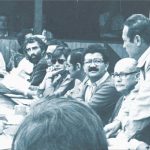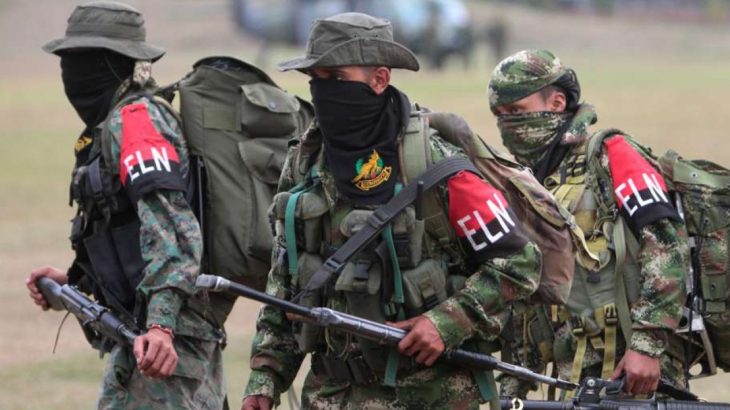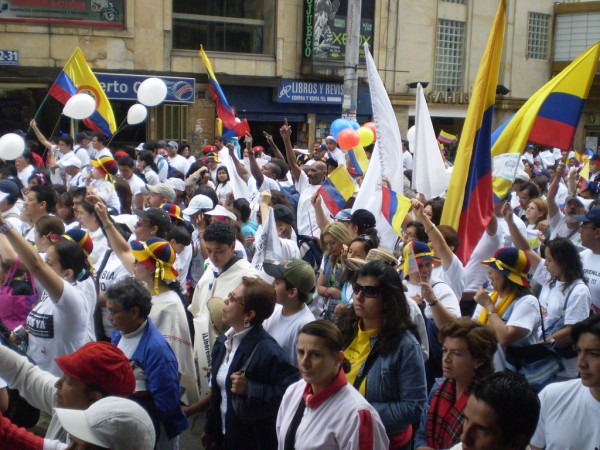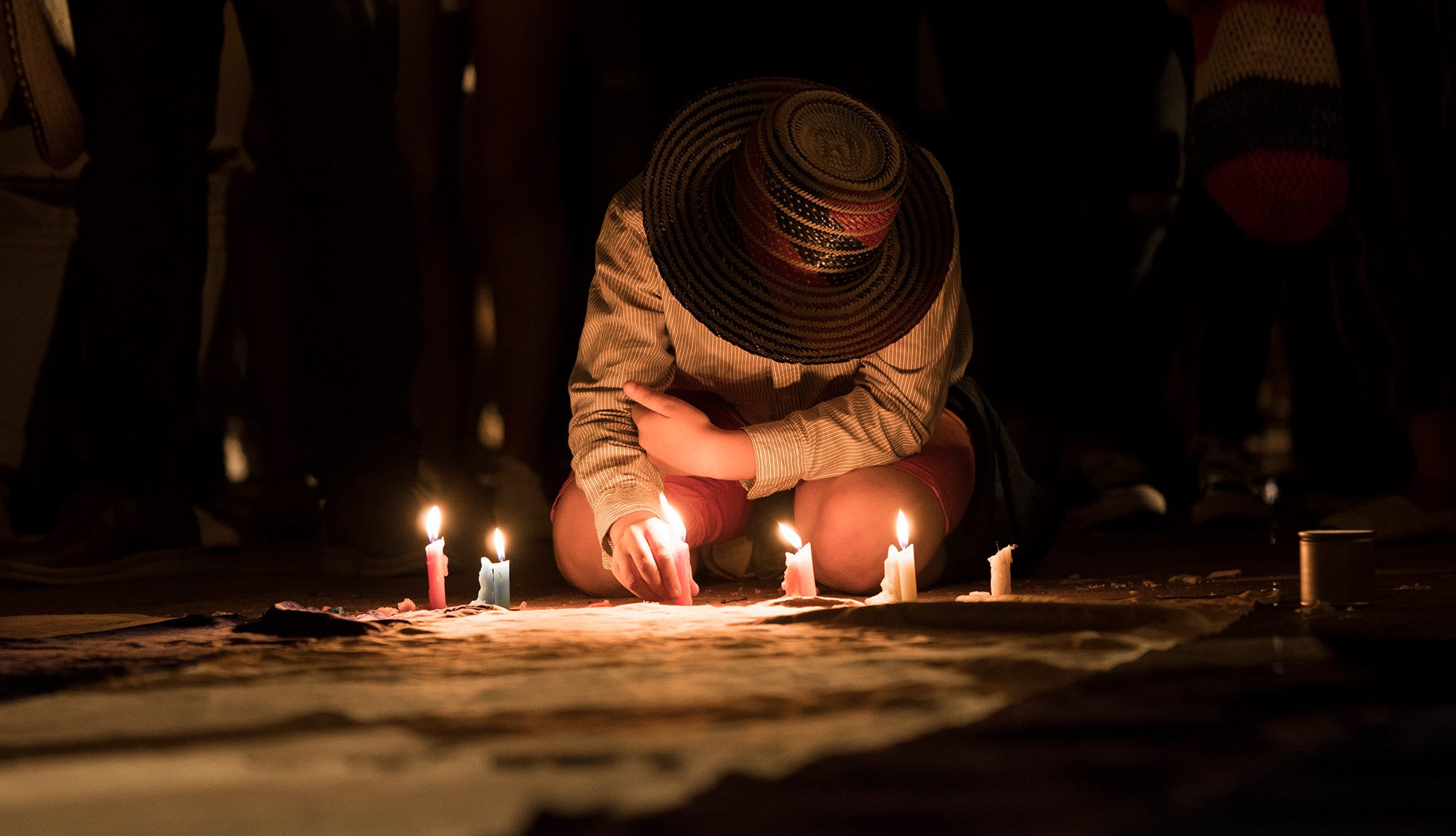
Photo: politicaexterior.com
Greg Haugan speaks to a conflict resolution NGO and a FARC spokesperson about the implications of the guerrilla attack that killed 11 army troops, and how it might affect the peace talks
April has been a tumultuous month for the Colombian peace process. On April 14, the FARC attacked an army unit in Cauca, leaving 11 soldiers dead and 19 wounded. The military say it was an unprovoked attack, while the FARC have renewed calls for a bilateral ceasefire, saying the attack was an inevitable result of ongoing fighting between the two sides.
This latest incident greatly complicates efforts to de-escalate the Colombian conflict, and puts the peace process at serious risk. In a poll conducted in the last week of April by Gallup Colombia, the percentage of Colombians in favour of abandoning the peace process altogether rose from 25 to 42 percent, while those supporting the process fell from 72 to 57 percent. The peace talks are starting to feel the heat from a country anxious to see results.
Christian Voelkel, a senior analyst for the Andean region at the International Crisis Group, explains that the political fallout from the events in Cauca increases pressure on negotiators to produce something tangible in the current round of talks, which began April 28.
“It’s extremely likely that we’ll see something concrete happen in this round of talks, perhaps something similar to the recent agreement reached by the two parties on landmine clearance operations,” he says. “Negotiators will definitely be feeling pressure to show the country that these talks aren’t dead and are still making progress.”

Havana: Delegations from FARC and the Government meet conflict victims. Photo: pazfarc-ep.org
If the current round produces something of significance, it will do so within a changed atmosphere. According to Voekel, for the first time, the government and FARC will be negotiating two points at the same time – justice, and the terms for laying down weapons. The risk of another incident similar to the confrontation in Cauca adds an unprecedented element of vulnerability to the process. As Voelkel says, “The risks to the peace process at the moment are very real.”
The FARC announced a unilateral ceasefire in December, saying they would only respond in self-defence to attacks by the military, and that they would abandon offensive actions. This was met with a scaling down of operations by the army. It may be unlikely that the FARC will make an official declaration lifting the ceasefire, as it would seriously damage their credibility, but Voelkel believes there are new risks nonetheless.
“While the FARC hasn’t abandoned its ceasefire, since Cauca the rhetoric has changed. The FARC now says the unilateral ceasefire still allows them to retaliate to ‘constant harassment’ from the military, something that is much more vague,” he said.
With all of this taking place in an environment where the government has felt forced to resume aerial bombing raids on rebel positions, the possibility of another incident like the one in Cauca increases greatly, with the potential to completely derail the peace talks.
For the FARC, this is evidence that the bilateral ceasefire they have long called for is so necessary.
“Trust can be rebuilt with a bilateral ceasefire, I am sure about that,” Tanja Nijmeijer, the Dutch guerrilla fighter who joined the FARC in 2002, tells The Bogota Post. “We think that a bilateral ceasefire is necessary as soon as possible and the reasons are obvious. A bilateral ceasefire will avoid situations like April 14; it will avoid more Colombians dying unnecessarily.”
For his part, Voelkel stated: “The tragic nature of what happened in Cauca aside, it doesn’t mean the deceleration of the conflict and the unilateral ceasefire have been a failure.”
He continues, “How many additional deaths would we have seen in the absence of these efforts?”
Voelkel points out that a bilateral ceasefire is no simple matter. “A verifiable bilateral ceasefire with mechanisms allowing observation from third parties is extremely complex. In the first place, doing it in a verifiable way would likely mean restricting the FARC to dedicated camps. This is something the FARC would never accept.”
What’s more, President Juan Manuel Santos has repeatedly dismissed the idea of a bilateral ceasefire. On April 29, he said a bilateral ceasefire “is unlikely” until a peace accord with the FARC is signed.
- Iván Márquez and Alfonso Cano during the Tlaxcala Peace Talks (1992). Photos: pazfarc-ep.org
- The bilateral ceasefire signed by representatives of the government and FARC at Los Acuerdos de La Uribe in which the FARC called for a ceasefire of all 27 of its factions and President Betancur ordered an end to all civil and military action in the country. The accord lasted less than two years.
- Members of the FARC delegation from Los Acuerdos de La Uribe, Meta (1984), one of the previous failed peace talk attempts. Photos: pazfarc-ep.org
According to Voelkel, the FARC have something different in mind. “When the FARC push for a bilateral ceasefire, what they’re really saying is that they want to continue the activities that generate income for the organisation, without resistance from the military. Politically, that’s very difficult for the government.”
Apart from the political fallout, the Cauca massacre also raises questions about how united the rank and file on both sides of the conflict are in their support of peace. While this is an objection frequently raised against the FARC – with observers doubting the ability of commanders in Havana to control their fighters in Colombia – some have now begun to question the unity of the Colombian military.
There is a serious lack of clarity regarding what exactly happened in Cauca – whether the military was ambushed, or whether they somehow provoked the attack. While few would question the government’s right to continue military operations against a guerrilla group trying to assert its influence in various regions around the country, if the military did indeed “provoke” the attack, this might suggest discord between the government’s attempts to reduce violent confrontation with the FARC and how these orders are actually carried out on the ground.
But Nijmeijer rejected the idea that her rebel group broke its own ceasefire, insisting that its fighters were acting in self-defence.
“What happened in Cauca was a consequence of the army’s manoeuvres, as well as a consequence of the lack of goodwill from the government to agree a bilateral ceasefire,” she said.
Voelkel believes the FARC likely violated the terms of their ceasefire in Cauca. But he adds, “It’s important to remember that Cauca happened within a context. What exactly was the military doing there, and did they somehow provoke the attack? The difficult task is figuring out how we can change this context without abandoning citizen security.”
Voelkel would like to see a truth commission set up to determine exactly what happened in Cauca and help the two sides move beyond the event, while getting past an ‘it’s all the other side’s fault’ mentality.

April 9, 2015: Tens of thousands march for peace and in remembrance of the victims, just five days before the Cauca incident. Photo: Pablo Donato/Amy Farrell
Indeed, it is precisely this mentality that will need to be overcome as the two sides negotiate justice and disarmament, the final two points of negotiation in the five-point peace agenda.
From the outside, negotiations on these two points appear to have reached a stalemate. The rebel group’s leadership in Havana have made it clear they will not agree to surrender their weapons, though an agreement that allows the FARC to keep their weapons is something that the government – and most Colombians – would not likely accept. Similarly, the FARC have stated on multiple occasions that they will not accept even one day of jail for any of their members.
Yet both Nijmeijer and Voelkel are optimistic about the potential for the talks to continue making progress.
Nijmeijer says: “It is important to note that on the issue of abandonment of weapons, the technical sub-commission is making progress. At this moment it is hearing the views of many international experts on abandonment of weapons and control of armament, a pilot project for the cleaning of territories of landmines and other explosive ordnance has been designed [the project is due to begin in May],” adding, “There is no such stalemate.”
This ‘sub-commission’ may call for a toning down of the rhetoric both sides use to refer to the terms being negotiated. While the FARC might not accept surrendering weapons to the government, there may be other possibilities for the “abandonment” or “laying down” of weapons, terms that imply the decision is voluntary, as opposed to accepting surrender.
Further, the FARC’s mistrust of the government and the history of previous attempts at demobilisation – ending in the murder of thousands of members of the Patriotic Union, the communist party formed by FARC sympathizers in the 1980s – might make it unrealistic for FARC weapons to be turned over to the government.
One possibility, however, would be for weapons to be turned over to a third party, such as an NGO or a mutually agreed upon foreign nation. “We’ve seen this type of agreement work in the peace process experiences of other nations, like Nepal,” says Voelkel.
What’s clear is that Colombia will need to remain patient if it expects the peace talks to produce an agreement that’s worth the paper its written on. “Rushing a peace process is like rushing a marriage,” says Nijmeijer. “The results can be disastrous.”
For more on what happened in Cauca, see our opinion piece here.
By Greg Haugan

